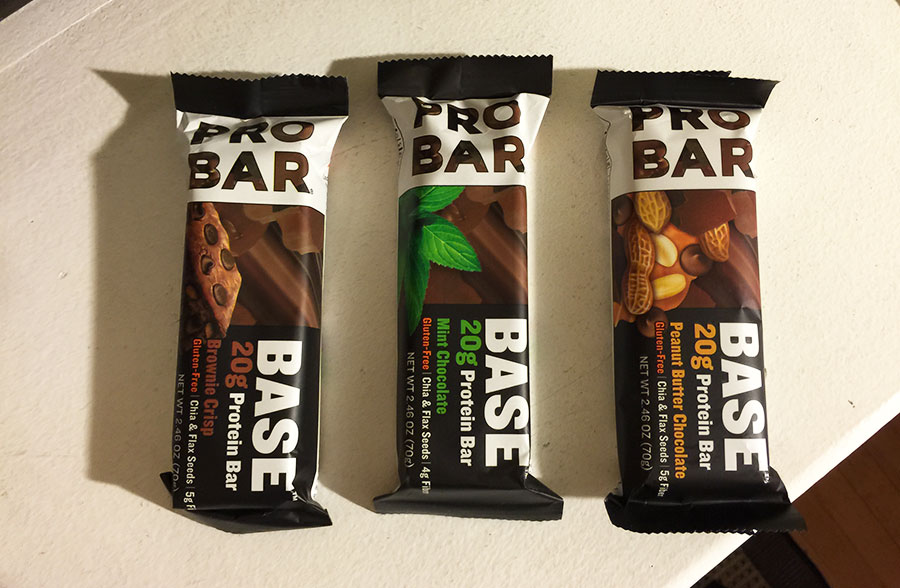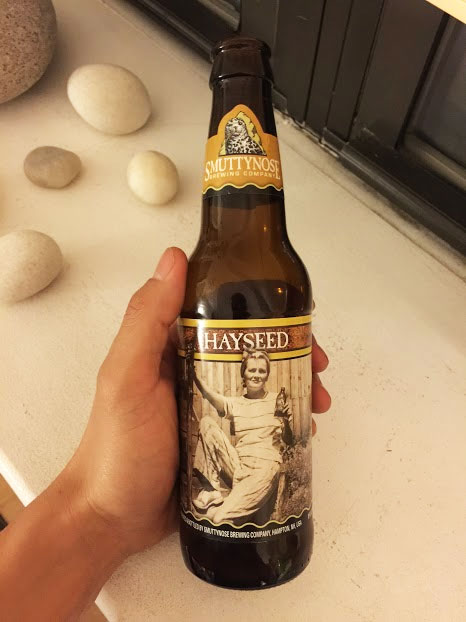I saw that someone at work had a box of PROBAR BASE protein bars on his desk. I asked him about it and he told me that he liked the taste. The flavor was Cookie Dough. I hung around his desk for a tad bit longer hoping he would offer me a bar to try, but he said nothing, so I went back and looked it up on Amazon.
I’ve never been much of a protein bar eater. In fact, protein bars remind me of high school when the PowerBar was all the rage (remember 36-pack boxes from CostCo?). They were pretty nasty and I only ate them when I was deathly hungry before football or track practice.
PROBAR BASE protein bars appealed to me because they’re coated with chocolate. I’m a sucker for chocolate, and I was also in the market for something healthier than a Snickers bar. The other limitation for me was that I can’t eat almonds (I have oral allergy syndrome), which rules out a good number of healthy snack bars out there. PROBAR BASE does have traces of almonds, which makes my mouth a tad bit itchy, but after eating over a dozen bars, I don’t even feel it anymore. The 20 grams of protein that the bar proudly advertises on its packaging comes from soybeans.
I started off with a 4 Flavor Variety Pack from Amazon to see which flavors I would like best. It turned out that I liked Mint Chocolate, Brownie Crisp, and Peanut Butter Chocolate but rather disliked the Cookie Dough. I found the bars to be the tastiest protein bars I could remember. They’re on the sweet side (14-17 grams of sugar per bar, which I think is on the high end) and the texture is not too mealy or crumbly like other bars. At $31.99 for the 12-count variety pack, they’re a bit on the pricey side at $2.67 per bar, but I find myself enjoying it rather than seeing it as a fuel-only snack.
I do my toughest workout of the week on Mondays, so I make sure to eat a bar a couple hours before I go to the gym. I also pack a few bars with me whenever I go golfing. Rather than buying a pack of M&Ms from the cart girl, I find that a PROBAR does a good job in keeping my hunger in check. A couple of downsides:
- The flax seeds get stuck in my teeth sometimes, so you might spot black flecks if I flash a smile.
- The chocolate coating might melt a bit if you leave it in a warm place. I had a bar in my jersey pocket when I went for a long bike ride and the chocolate was starting to melt when I took it out to eat.
I’m game to try other protein bars, but I like that I’ve found one that appeals to my sweet tooth and gets the job done in giving me an energy boost.
In case it matters to you, the PROBAR BASE protein bar is non-GMO, organic, and gluten-free, as evidenced by this graphic on their website:

Nutrition info and ingredients can be found at the PROBAR website.


